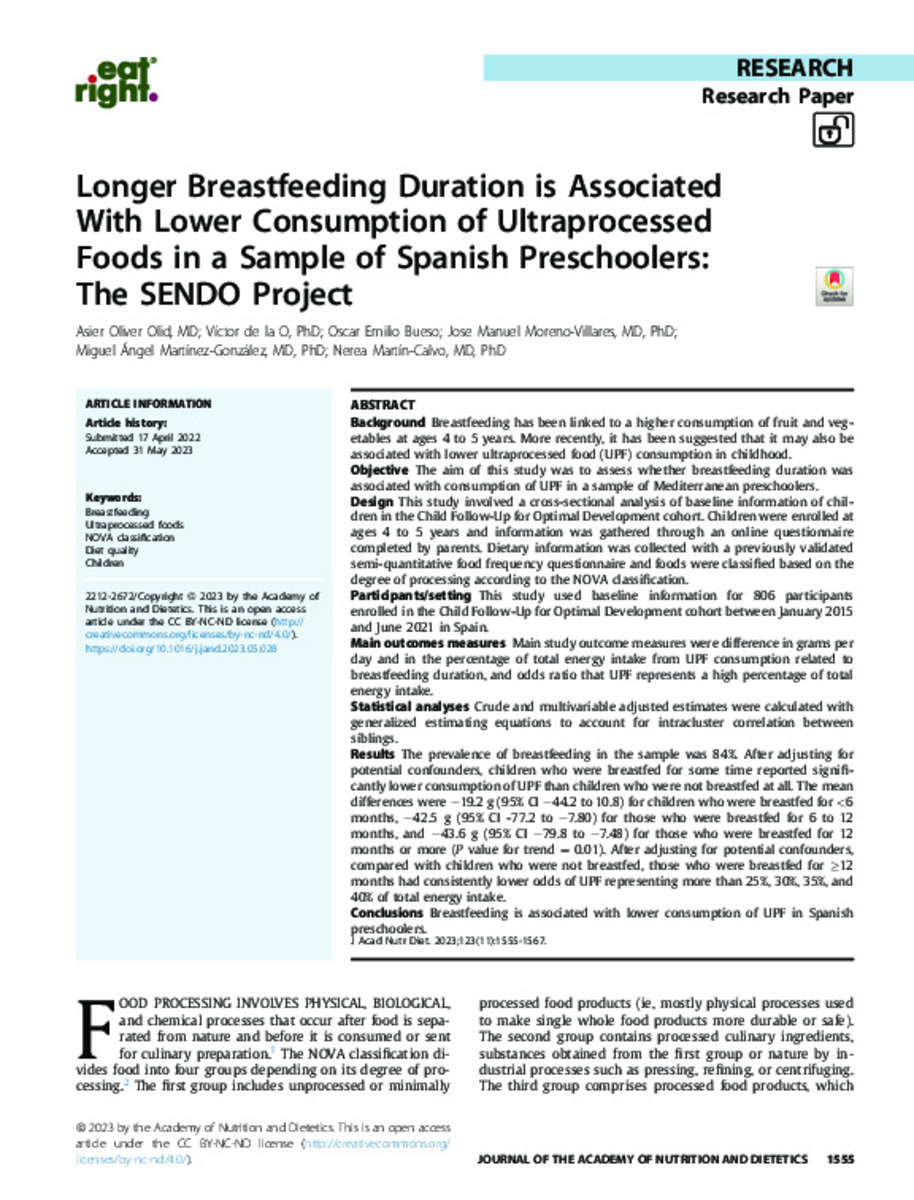Longer breastfeeding duration is associated with lower consumption of ultraprocessed foods in a sample of spanish preschoolers: The SENDO project
Keywords:
Breastfeeding
Children
Diet quality
NOVA classification
Ultraprocessed foods
Note:
This is an open access article under the CC BY-NC-ND license
Citation:
Oliver, A. (Asier); De-la-O-Pascual, V. (Víctor); Emilio-Bueso, Ó. (Óscar); et al. "Longer breastfeeding duration is associated with lower consumption of ultraprocessed foods in a sample of spanish preschoolers: The SENDO project". Journal of the Academy of Nutrition and Dietetics. 123 (11), 2023, 15551 - 1567
Statistics and impact
0 citas en

0 citas en

Items in Dadun are protected by copyright, with all rights reserved, unless otherwise indicated.








